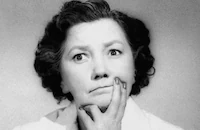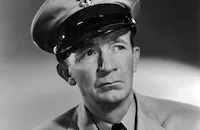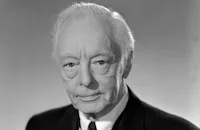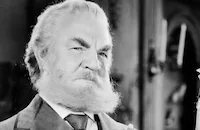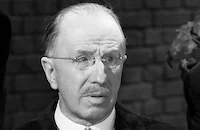Cooper plays "Stretch" Willoughby, a rodeo cowboy who finds himself falling in love with a free-spirited young woman named Mary Smith (Merle Oberon), the daughter of a Presidential candidate (Henry Kolker). Mary and Stretch meet on a blind date after her father has exiled her to his estate in Florida. Even though Stretch is a textbook hayseed, the two lovebirds eventually marry. The formulaic nature of the film continues through the couple's squabble. But they make up when Cooper gets endearingly cornpone at just the right time, before just the right crowd. That may sound like a spoiler, but it's not like you expect them to suffer through a nasty divorce proceeding.
The Cowboy and the Lady sure did undergo a strenuous birthing process for such a light little comedy. Legend has it that director Leo McCarey wrote the script in three days to pay off some overdue hospital bills. Recognizing a dud when he wrote one, McCarey refused MGM's request that he direct the picture, rather poetically noting that he "wouldn't touch that crap." After a while, William Wyler, of all people, agreed to take the reigns, even though he too thought the script was a mess.
After just one day of filming, Wyler and studio head Sam Goldwyn were at each other's throats. "I am compelled to work without a completed script," Wyler said. "Only one sequence was ready to work when we started." Goldwyn, for his part, accused Wyler of doing too many re-takes and "wasting footage." So Wyler (who, as Bette Davis once pointed out, always did too many re-takes) stomped off in a huff, and Goldwyn suspended him. Although Wyler would never return to finish The Cowboy and the Lady, he and Goldwyn ultimately made up. The very next year, they successfully worked together on Wuthering Heights (1939).
The replacement of Wyler by H.C. Potter, however, did nothing to make the shoot easier. Production logs show that David Niven appeared in a few scenes, playing a British diplomat, but he ended up on the cutting room floor, as did some footage featuring actress Benita Hume. Many other minor actors were said to have worked on the picture, but also didn't make the final cut.
Things finally got so out of hand, Life magazine noted that the budget had skyrocketed past $1,750,000, no small amount for a Western at that time. The picture was a very minor success, but no one really seemed to care in the long run. Cooper would frequently strike gold in the future, becoming a Hollywood icon who's revered to this day.
Producer: Samuel Goldwyn
Director: H.C. Potter
Screenplay: S.N. Behrman, Sonya Levien
Cinematography: Gregg Toland
Editing: Sherman Todd
Music: Alfred Newman, Lionel Newman, Arthur Quenzer
Art Direction: James Basevi, Richard Day
Set Design: Julia Heron
Costume Design: Omar Kiam
Sound: Paul Neal, Thomas T. Moulton
Principal Cast: Gary Cooper ("Stretch" Willoughby), Merle Oberon (Mary Smith), Patsy Kelly (Katie Callahan), Walter Brennan (Sugar), Fuzzy Knight (Buzz), Mabel Todd (Elly), Henry Kolker (Horace Smith), Harry Davenport (Uncle Hannibal Smith), Emma Dunn (Ma Hawkins).
B&W-91m.
by Paul Tatara







